Easkey Britton is a well-known Irish surfer, marine social scientist and author. In her book Saltwater in the Blood there’s a paragraph that begins: “One woman recently wrote to me from Iran, ‘I finally understood the most important skill to surf – connection with Mother Ocean. Believe it or not it changed my whole being.”
Britton was the first person to surf in Baluchistan, a rural coastal province of Iran. She went on to set up the Be Like Water programme, which helped to ignite a passion for surfing in Iranian women and girls who had never before accessed the ocean. Developed by Britton and Iran's first female triathlete Shirin Gerami, those tentative first steps into the water are documented in the 2016 film Into the Sea.
The experience sparked a plan to develop a safe, culturally-appropriate and functional surfwear solution for women. And after almost a decade in development, Cornish surfwear company Finisterre, with whom Britton works as a brand ambassador, has just launched the Seasuit for sale. Britton and the Finisterre team now know that the Seasuit has a much wider application than first imagined.
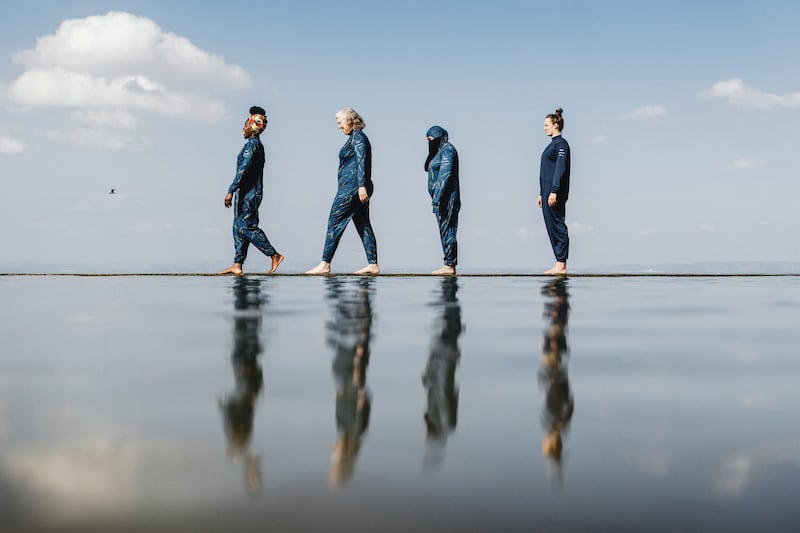
“We have had so much insight from so many people that shows a diversity of need that wasn’t being met – especially around body image in water – everything from size, to scarring, sun sensitivity to gender,” says Britton.
The Seasuit is a one-piece design with a crossover feature attached to an inner panel at the back, with built-in bra support. It can be worn over a wetsuit, a swimsuit or with nothing underneath, and features batwing sleeves and baggy harem-style pants for a loose yet concealing fit. The fabric pattern is designed to further disguise the contours of the body.
Britton says the surf industry has been slow to develop any functional products beyond the bikini or cold water wetsuit – something she struggled with herself as a competitive surfer and self-conscious teenager. “Surfing has an image of being very exclusive,” says Britton. “It is very white, male and economically privileged. It’s starting to change, but women have been hypersexualised in the surfing media too . . . and what women wear seems to be such a point of debate for so many people.”
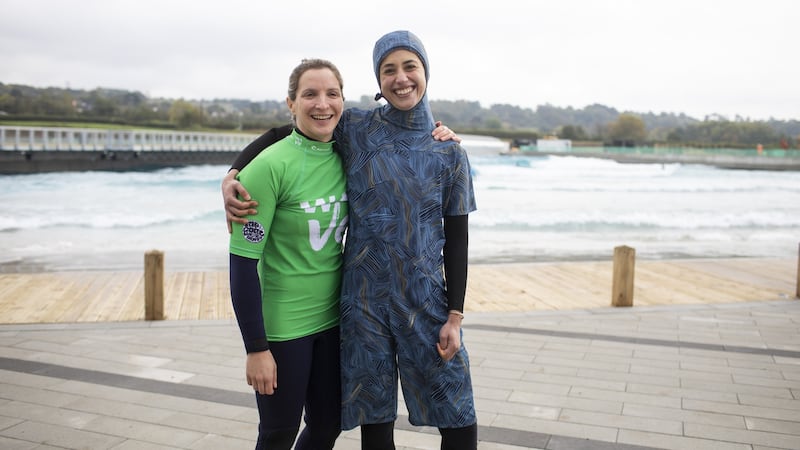
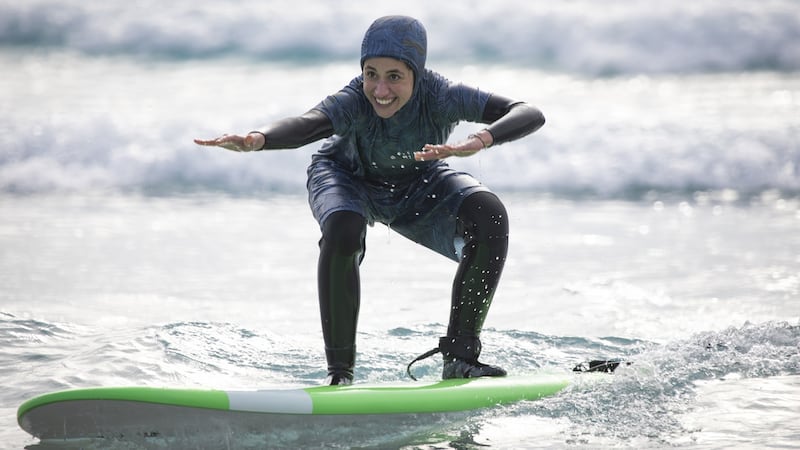
The response to the Seasuit has been overwhelmingly positive, she says, especially from women in places like Sri Lanka and the Maldives where surfing is a relatively new sport. But the wearing of full coverage suits can also be controversial. In France, for example, the wearing of burkinis in public swimming pools has become a contentious, and political, issue.
“It is a complex issue,” Britton says. “But it is about offering people a choice as to how they want to be in the world, what they want to wear. Why not have the option to have something more modest, if that makes you feel more comfortable? In places where it is very restrictive, by not offering it [a product like the Seasuit] women don’t ever get the chance to go in the ocean at all. For me, it’s about helping people do what they want to do by offering more choice.”
Niamh O’Laoighre is head of product development at Finisterre, and one of the lead designers on the Seasuit project. Originally from Co Wexford, her family moved to the UK when she was 10. She leads a team of developers and garment technologists who take products from concept stage to the shipping of the final garment.
Finisterre designs don’t usually involve such intense consultation as the Seasuit, O’Laoighre says. “This product was very different. It was born from a cultural need, and therefore we had to take quite a lot of advice and consideration when making it. It had to be absolutely fit for purpose, and we needed to make sure we were doing the product, and the people who needed it, justice.
“In Iran, where this product was born, there are a lot of limitations for women having access to water sports. The suit had to be culturally appropriate. But what was interesting was that, while we started out with a specific purpose, by ticking one box we were ticking lots of boxes for lots of other people too.”
O’Laoighre says that the response to the product has been eye-opening.
“Many people are asking for it for reasons beyond culture – for example women going through cancer treatment who are sensitive to sunlight and need to keep their body and scalp covered,” says O’Laoighre.
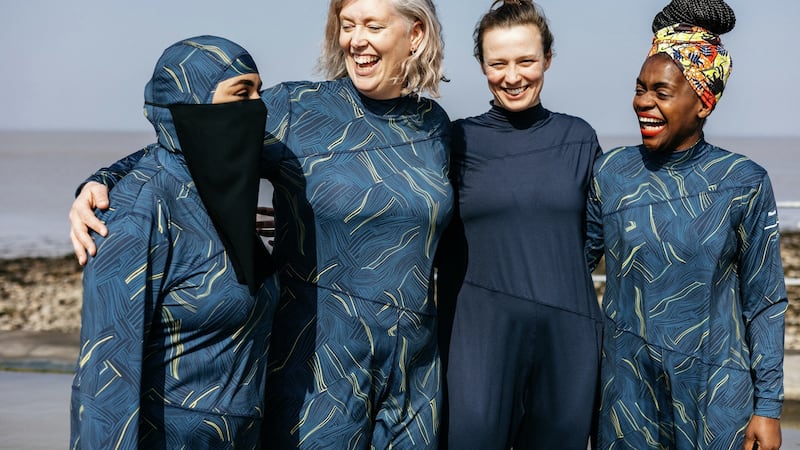
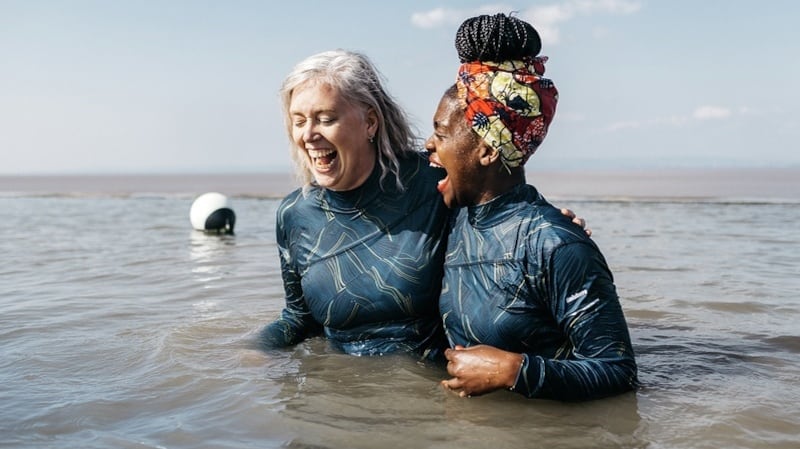
The Finisterre Foundation has a "buy one, gift one" scheme whereby for every Seasuit purchased, one will be gifted. Individual applicants and groups can register a request.
The company worked with Falmouth University, where a design for the garment by Synne Knutson was selected and then developed by Finisterre's Rachel Preston. A design by Ayesha King from Plymouth College of Art became the starting point for the print used on the final garment. "It's rare that something students work on in university actually goes to market, so it's a fantastic achievement for the students," says O'Laoighre.
The Seasuit is made from Seaqual, a sustainable fabric made from marine and post-consumer plastic, with global recycle standard certification. “There is a chain of custody so that at every moment of production it has to meet a certification – from the raw material to the yarn spinner, the yarn dyer to the fabric itself,” says O’Laoighre.
The design has been tested by surfers and cold water swimmers, and amended several times to ensure optimum performance. The suit initially had a built-in hood too.
“As we went through the development process we realised that if you didn’t need the hood it would drag in the water,” says O’Laoighre. “We then developed the suit to be compatible with a separate Hijab. There are quite a few culturally appropriate products out there, but I think the Seasuit is unique. It’s the kind of product that you don’t even know you’ve been lacking until you see it. So hopefully it’s a game changer in people’s lives.”
The Seasuit may indeed prove game changing for Arooj Shah. As a young Muslim woman living in Bradford in Yorkshire (with relatives in Galway), she has been active since childhood – enjoying horse riding as a girl, and later, in university, pursuing kickboxing, archery, rock climbing and scuba diving.
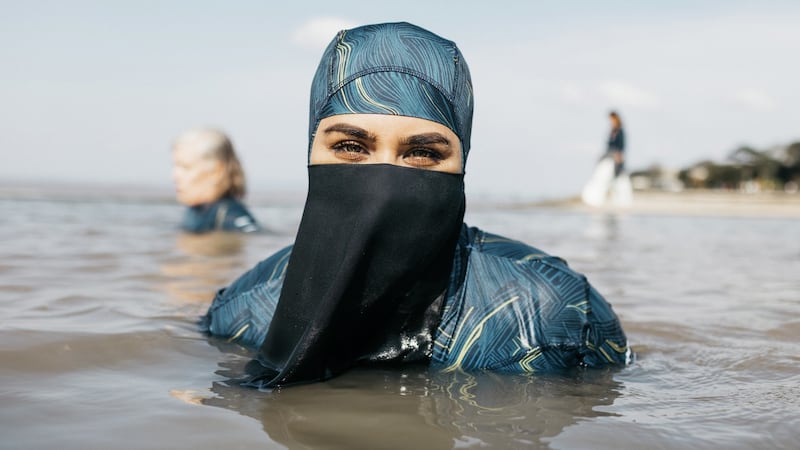
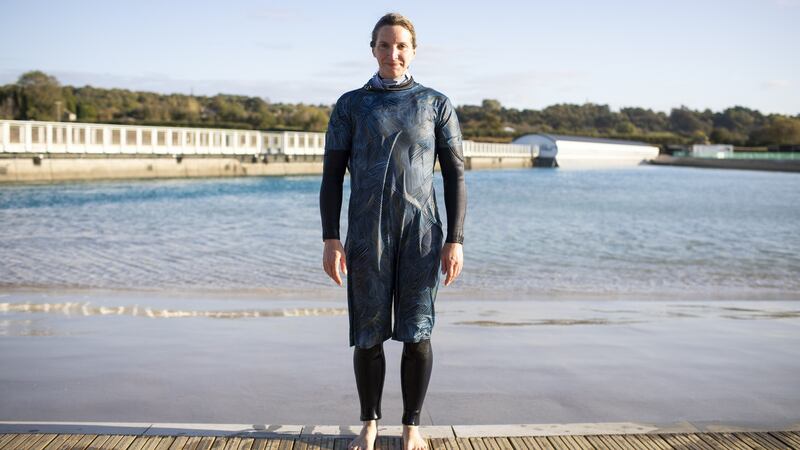
Shah says that it is important for her to dress modestly when engaging in sport in mixed settings. While she has never seen this as a barrier to sport – indeed, it has sometimes been a great conversation starter – it has posed some challenges. When scuba diving, for example, she has had to cobble together a “Frankenstein outfit” from leggings, a long-sleeved top and a loose-fitting basketball kit. “It was a challenge to find something that I felt comfortable and modest enough in,” she says.
She says it takes a “certain amount of bravery” to get involved in watersports as a Muslim woman. “I can’t say it was easy for me to participate in a scuba diving group and be the only person dressed head-to-toe. It’s not malicious, but people do stare because they are curious, so it does take courage. The great thing about the Seasuit is that it looks intentionally ‘fit for purpose’,” she says with a laugh. “You don’t just look like you forgot your swimsuit.”
“To see all the elements come together so beautifully – the pattern, the design, the fabric and ethos – is incredible,” Britton reflects. “It’s about creating a really positive impact for women and getting in the water and doing what we love.”
[ finisterre.com/collections/the-seasuit-projectOpens in new window ]





















